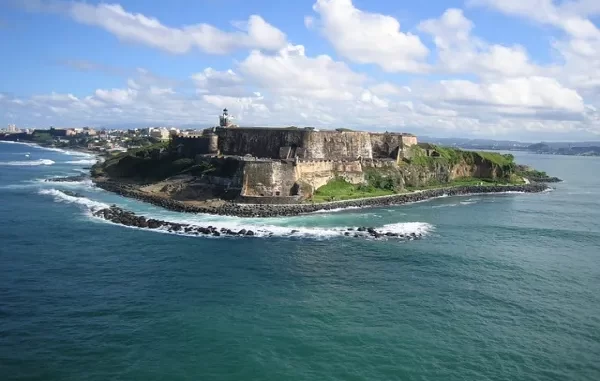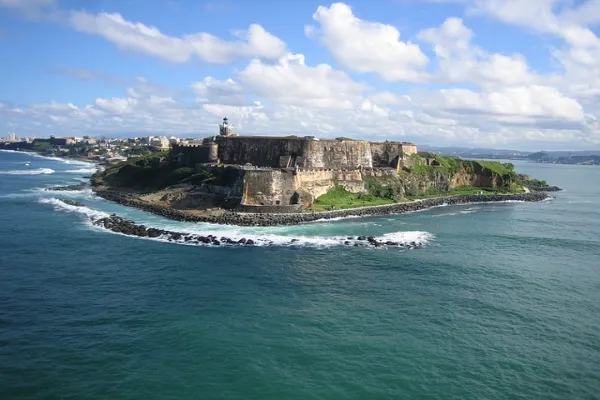
Uncovering the History of Puerto Rico: A Look at the Remnants of its Spanish Colonial Past
Puerto Rico is home to a rich and diverse history that has been shaped by centuries of Spanish colonial rule. From the 16th century onwards, the island was colonized by the Spanish, and its cultural heritage reflects this long and turbulent past. Today, Puerto Rico is a vibrant Caribbean nation, but its Spanish colonial roots remain evident throughout the island.
In the 16th century, the Spanish began to establish settlements on the island, bringing with them a distinct cultural flavor. This flavor is still found throughout the island, from the architecture and cobblestone streets of Old San Juan to the influence of Catholicism in the everyday lives of Puerto Ricans. The Spanish also brought with them a number of unique traditions that have become part of the Puerto Rican identity, such as the traditional jíbaro music and its equally distinctive cuisine.
The Spanish colonial era left a lasting imprint on Puerto Rican society. The island’s official language is Spanish, and many of its cultural institutions are based on Spanish traditions. In addition, many families on the island can trace their ancestry back to the Spanish settlers of the 16th century.
The island’s landscape is also a reminder of its Spanish colonial past. The ruins of El Morro, a Spanish fort that was built in the 16th century, are a popular tourist destination. The walled city of San Juan is another example of the island’s colonial heritage. The city was founded in 1521 by the Spanish conquistador Juan Ponce de León, and is still home to many of its original colonial-era buildings.
The Spanish colonial past of Puerto Rico is also remembered in its art and culture. The island has a thriving art scene that includes a mix of traditional and modern works, many of which are inspired by the island’s colonial past. For example, the traditional jíbaro music is still popular throughout the island, and other forms of traditional art, such as painting and sculpture, remain popular as well.
Puerto Rico is home to a rich and varied history, and its Spanish colonial past is an important part of this story. From its colonial-era architecture to its traditional art and culture, the island remains a testament to the long and complex history of its people.
Exploring Puerto Rico’s Natural Beauty: Discovering the Island’s Abundant Flora and Fauna
Puerto Rico is an island known for its stunning natural beauty, with lush forests, majestic mountains, and breathtaking beaches. Home to incredible flora and fauna, the island is a paradise for nature lovers.
As you explore Puerto Rico’s natural beauty, you’ll find a variety of landscapes, each home to an array of unique plants and animals. The island’s tropical climate and diverse terrain provide the perfect habitat for numerous species of birds, mammals, reptiles, amphibians, and aquatic life.
The island’s lush forests are home to a variety of plants, from towering trees to colorful flowers. You’ll find a wide range of native species, as well as exotic plants from around the world. From the popular flamboyán tree, with its bright red flowers, to the national flower of Puerto Rico, the hibiscus, there’s no shortage of gorgeous blooms.
The island is also home to a diverse array of animals. Puerto Rico is a haven for birders, with over 200 species of birds found throughout the island. You’ll also find numerous mammals, such as the endangered Puerto Rican amazon, the coquí frog, and the critically endangered Puerto Rican crested toad. Reptiles, such as iguanas and geckos, are also a common sight.
Puerto Rico’s waters are also teeming with life. You’ll find colorful coral reefs, as well as a variety of fish, turtles, and even whales. The island is also home to numerous species of crustaceans, such as lobsters, crabs, and shrimp.
Whether you’re an avid hiker, bird watcher, or just looking to enjoy the incredible beauty of the island, Puerto Rico has something for everyone. With its abundance of flora and fauna, the island is a paradise for nature lovers. So take a journey and explore the amazing natural beauty of Puerto Rico.
Exploring Puerto Rico’s Unique Cuisine: Tasting the Flavors of Caribbean Fusion
Puerto Rico is known for its unique flavors and Caribbean fusion cuisine. The cuisine is a blend of indigenous Taino, Spanish, African, and American influences, creating a vibrant, flavorful, and diverse style of cooking. With the island’s unique climate and geography, Puerto Rican cuisine is also highly seasonal and locally sourced.

For starters, there are several classic dishes that are essential to Puerto Rican cuisine. Rice and beans, or “arroz con gandules” as it is called in Puerto Rico, is a staple of any Puerto Rican meal. The combination of red beans, rice, and sazón, a unique seasoning blend, creates a flavorful and comforting dish.
Another classic is “tostones”, which are made by thinly slicing, frying, and salting plantains. This savory side dish is a great accompaniment to many of the island’s traditional dishes.
When it comes to entrees, there are a variety of options. “Mofongo” is a popular dish made with mashed plantains, garlic, and pork cracklings. This dish can be served with a variety of proteins, including chicken, beef, or seafood.
“Asopao” is another popular option. This soup is a hearty combination of vegetables, proteins, and rice. It is usually served with a side of fried plantains.
Finally, no Puerto Rican meal would be complete without a dessert. “Flan” is a classic custard dessert that is popular throughout the Caribbean. It is made with eggs, sugar, milk, and a few other ingredients. It is usually topped with a caramel sauce.
Puerto Rican cuisine is a unique blend of flavors, textures, and colors. Whether you’re looking for a light snack, a hearty meal, or a decadent dessert, Puerto Rico has something to offer. With its diverse ingredients and flavorful combinations, it’s no wonder why Puerto Rican cuisine is so popular.
Puerto Rico’s Cultural Diversity: Exploring the Mix of African, Spanish, and Taíno Influences
Puerto Rico is a Caribbean island located in the northeastern Caribbean Sea. It is renowned for its culture, which is a unique mix of African, Spanish, and Taíno influences. This cultural diversity is reflected in the customs, language, music, art, and cuisine of the island.
The African influence in Puerto Rican culture is evident in the music, dance, and language of the island. African influences can be heard in the popular music genres such as reggaeton and salsa. The African influence is also seen in the traditional dance styles of plena and bomba, which originated in the African slave communities of Puerto Rico. Additionally, the African influence is seen in the language of the island, where words of African origin are commonly used.
The Spanish influence in Puerto Rican culture is evident in the language, cuisine, and customs of the island. Spanish is the official language of Puerto Rico and is spoken by nearly all residents of the island. Spanish also influences the food of the island, with dishes such as arroz con pollo, mofongo, and bacalao. Additionally, many customs and beliefs of the island are rooted in Spanish culture.
Finally, the Taíno influence in Puerto Rican culture is evident in the language, food, and art of the island. The Taíno language, also known as Taíno-Arawak, is still spoken by some on the island. Taíno influences can also be seen in the traditional foods of Puerto Rico, such as yuca con mojo, and in the art, with traditional Taíno motifs appearing in pottery and other artwork.
The cultural diversity of Puerto Rico is evident in the various influences that shape the customs, language, music, art, and cuisine of the island. This mix of African, Spanish, and Taíno influences create a unique culture that is celebrated by residents and visitors alike.
Puerto Rico’s Unique Music Scene: Discovering Sounds of Bomba, Salsa, and Reggaeton
Puerto Rico is home to a unique and vibrant music scene that has been shaped by centuries of cultural influences. The island has a rich musical heritage that includes traditional genres like bomba and salsa, as well as more contemporary styles like reggaeton. In this article, we will explore the history and development of these genres, and discover the sounds of Puerto Rican music.
Bomba is a traditional Afro-Puerto Rican style of music and dance. It is characterized by percussion instruments such as drums, maracas, and güiro, as well as call-and-response vocals. Bomba has its roots in the African drumming of slaves in Puerto Rico, and it is often performed in a circle formation with the dancer in the center. Today, it is an important part of Puerto Rican culture, and it is often performed at festivals and celebrations.
Salsa is another popular genre of Puerto Rican music. It is a combination of Cuban and Latin American rhythms, and it is characterized by its fast tempo and infectious rhythms. Salsa has become one of the most popular genres of music throughout the Caribbean and Latin America, and it is often played at parties and clubs.
Reggaeton is a relatively new style that has become popular in Puerto Rico in recent years. It is a mix of hip-hop, Latin, and reggae music, and it is characterized by its heavy beat and danceable rhythms. Reggaeton has been embraced by the younger generation, and it has become a major force in Puerto Rican music.
As you can see, Puerto Rico has a rich and diverse music scene that reflects its history and culture. From traditional styles like bomba and salsa to more contemporary sounds like reggaeton, there is something for everyone to enjoy. So whether you’re looking for a lively dance party or a relaxing evening of music, Puerto Rico has something for you.






Leave a Reply